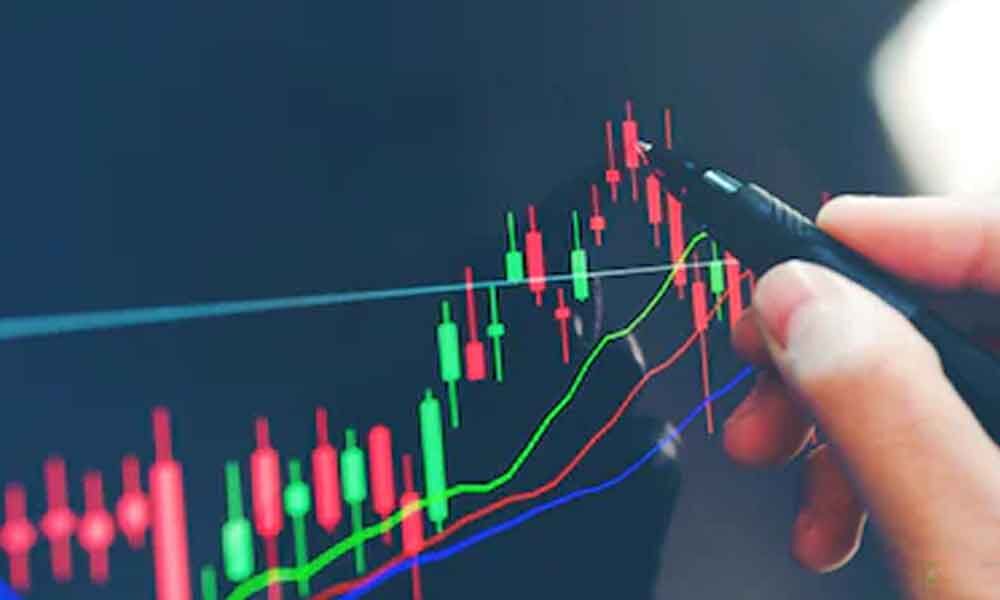
The moving average is a technical analysis tool that helps traders identify potential trading opportunities. It is used to smooth out price action over a certain period, allowing investors to get a better sense of the underlying trend in the market. Generally speaking, the longer the lookback period or the number of days used to calculate the moving average, the smoother and more reliable it will be.
A simple moving average
A simple moving average (SMA) is calculated by taking an average of past prices over a specified number of days (e.g., 5-day SMA). The calculation doesn’t change regardless of whether prices rise or fall; as long as you consider all available data points within your chosen timeframe, you can generate an accurate average that will give you a good indication of the market’s current direction.
The SMA is a lagging indicator, meaning it won’t predict future prices; instead, it tracks past price movements and allows investors to spot trends before they occur. For example, if the SMA is rising, this may indicate an uptrend in the market; likewise, a falling SMA could signify that prices are headed downward.
An exponential moving average
An exponential moving average (EMA) is like an SMA but with one additional factor: each period’s data point is given more weight than its predecessor, which means that more recent data points have a more significant influence on the EMA calculation than older data points, which can help investors spot emerging trends more quickly.
The EMA also uses the same basic calculation as the SMA; it just adds a weighting factor to each period’s data point so that more recent information significantly impacts the final result. An example of an EMA would be a 10-day EMA, where the most recent day’s price is given ten times more weight than the first day in the lookback period.
This extra emphasis on recent prices makes EMAs better suited for short-term trading strategies and quick responses to market movements. They are beneficial when combined with other technical indicators such as support and resistance lines or Fibonacci retracements.
Moving averages can be used in various ways, but they are most commonly used to identify potential buy and sell signals. For example, when the price moves above the moving average line (known as a “golden cross”), this often signals that an uptrend is underway; conversely, when prices fall below the moving average line (known as a “death cross”), it may be time for investors to exit their positions or take profits.
Other technical analysis tools used by forex traders
One of the most critical technical analysis tools used by forex traders is chart patterns. These graphical representations of a currency pair’s price movements can provide valuable insight into potential trading opportunities. There are several popular chart patterns that traders look out for, including triangles, head and shoulders, double tops/bottoms, flags and trendlines.
These patterns can identify potential entry and exit points in the market. For example, if you were looking at a triangle pattern in currency trading, you could use this information to decide when to enter or exit your position. If the price rises above the top of the triangle, this may indicate an uptrend; conversely, if it falls below the bottom, this could signal a downtrend.
Another technical analysis tool forex traders use support and resistance lines. These are areas on a chart where prices have historically found difficulty rising or falling beyond. Traders often use these levels to decide when to enter or exit their positions to maximise profits or minimise losses. A break, either support or resistance, typically signals an impending trend reversal and should be taken as an indication that it may be time to adjust your strategy accordingly.
Conclusion
Moving averages are a valuable and popular tool used by technical analysts in Singapore to identify market trends and decide when to enter and exit their positions. Moving averages can be used on all types of financial instruments, including forex pairs, stocks, bonds, commodities, etc., and they can help traders determine possible entry and exit points in the market. Additionally, moving averages can be combined with other technical analysis tools, such as chart patterns or support/resistance levels, to generate more accurate buy/sell signals. No matter what trading strategy you use, understanding how to use moving averages effectively is essential for success in forex trading.



